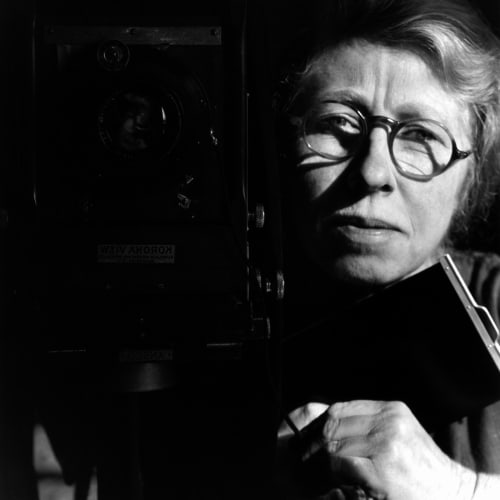Botanical photography, nudes, portraits and industrial landscapes were some of Cunningham’s major photographic themes.
Cunningham grew up in a big family in Portland, Oregon, and Seattle, Washington. Cunningham’s interest in photography came early, and in 1901, she sent away $15 for her first camera, commencing what would become one of the longest photographic careers in the history of the medium. Cunningham’s formal training in photography was self-constructed: She enrolled at the University of Washington as a chemistry student because there were no photography classes or photo department.
After graduation, she was a photo assistant at the Edward Curtis studio, where she learned first-hand, the business aspects of running a portrait studio and experienced the technique of platinum printing.
After two years at the Curtis studio, she spent a year in Dresden, Germany finally enabling her to formally study the photographic process with the renowned Dr. Robert Luther at the Technische Hochschule where she became proficient in the technique of platinum printing.
Returning to the United States, Cunningham opened her own photography studio in Seattle and soon became a popular portrait photographer while pursuing her own Pictorialist photographic work with a large format camera. In 1917 Cunningham moved to Northern California where she resided for the rest of her life.
As a professional photographer, Cunningham continued to work as a portrait photographer while creating work for herself and managing gallery relationships, exhibitions of her work, and accepting part-time teaching positions in California. In the 1930s
Cunningham was a member of the California-based Group f/64, whose photographic intent departed from Pictorialism with sharply focused, longer depth of field photographs.
In 1975, Cunningham established the Imogen Cunningham Trust, to create an archive of her work so that it could continue to be available for exhibition, study and sale.








